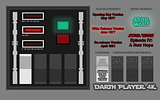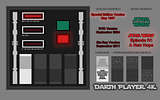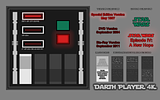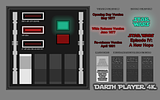I continue to be amazed by these ever-more-impressive iterations. I am primarily monitoring this thread via my mobile device with retina-grade OLED screen. I especially enjoy the Screenshot Comparisons, because I can dynamically zoom in or out of the paired images and easily spot the differences when toggling between the screenshots. I do wonder about how my mobile browser handles these zooms, without "upscaling", but to my eye the image is simply being enlarged when I zoom in, preserving the screenshots as they were uploaded.
As a visually-oriented guy with no experience developing imaging software, I'd like to ask a couple of questions about what is going on "under the hood" when using a SuperResolution operation. I haven't (yet) read the SR scientific paper referenced in this thread, since I expect that it is likely to be full of equations that would be above my head.
Conceptually, though, I believe I understand how it works with motion picture images: for any given still frame in a sequence, the surrounding frames are used to recruit additional picture detail... Sort of like High Dynamic Range (HDR), but for image detail, rather than exposure detail. (I remember there was discussion that only frames following the given still frame could be used to recruit details for some reason).
So, if this is a somewhat automated process, is the software able to accurately track the motion of an "object" (such as an actor, prop, spaceship, or set) as it moves throughout a scene? I can imagine that a relatively stationary shot would be rather simple for the automated process to work. Or, perhaps a simple camera move would also yield good results rather easily. But is the software also sophisticated enough to recruit detail from a filmed object as it moves in 3D space in front of the camera lens, without incorrectly placing detail that does not belong? For example, if RD-D2's dome were to rotate significantly through the course of a shot that is to be processed with a SR script, how does the script not wrongly place detail of R2's eye-lens for those frames that the eye is facing away from the camera? Also, light and shadow and the sheen of metal and glossy surfaces can make pixel values change radically during the course of a shot, even for objects that only move a small amount in the frame.
If the SR process were a manual one, essentially a visual effects technique, I suspect a digital artist could take these filmmaking aspects into account and really work amazing wonders with custom-tailored upscales for each shot. However, this would obviously mean a great deal of manual work.



